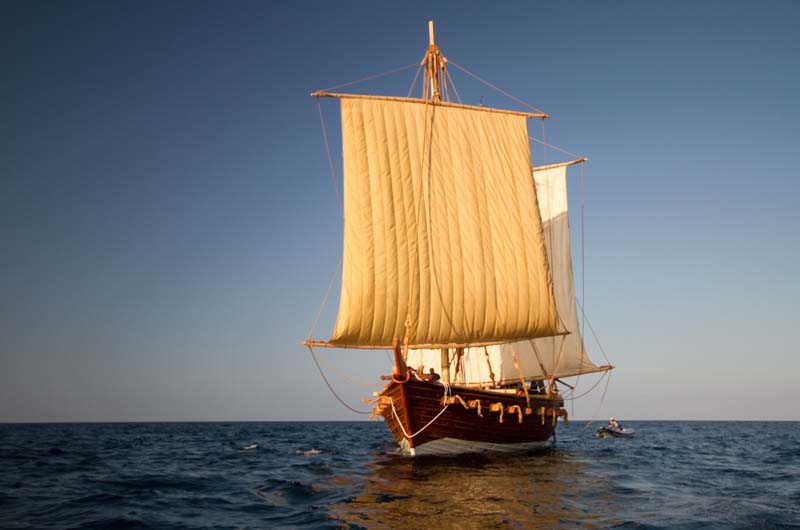
The Jewel handles well even close to the wind
The story of the Jewel
10th March 2010
H.E. Mr George Yeo, Singapore, Minister for Foreign Affairs.
The Singapore Foreign Minister tells the Singapore side of the story of the Jewel of Muscat
On 16 February, Zainul Abidin waved off the crew of an Omani dhow as it set sail on a long voyage to Singapore, stopping by at Cochin, Galle, Penang and Malacca. The dhow is a replica of an ancient ship which carried a cargo of over 60,000 pieces of pottery and other artefacts from the Tang Dynasty in the 9thcentury. This is an interesting story about which a book should one day be written.
Almost ten years ago, a young German shipwreck explorer wrote to me when I was Minister of Trade and Industry about a wreck that had been salvaged some 500 miles south of Singapore in sandy shallow waters near the island of Belitung. It was a significant find, probably the oldest bearing such a huge cargo. He said it would be a pity for the cargo to be sold off in pieces. Singapore should acquire and display it, and tell this wonderful story about the maritime silk route. The east-west trade which waxed and waned over the centuries is of course what continues to give life to Singapore.
I agreed to see him, not sure how serious the offer was. When I examined the pictures, I knew this was something important. But where to find the money? The Singapore Tourism Board saw value in it but could only stump up a certain amount. Luckily, through Ong Beng Seng who had an interest in wrecks, we were able to persuade the Khoo Foundation to finance the rest. That’s greatly simplifying what actually happened because along the way, there were many twists and turns.
After I left MTI in 2004, the deal was closed and STB owned the treasure. However, there is much research to be done about so many different aspects of the cargo, the ship, the times. The pottery pieces came from kilns all over China, the greatest number from Changsha. They included a few precious blue-and-whites, precursor of the classic Ming. Reflecting the period, the motifs were Taoist, Buddhist, Islamic and Central Asian. That was the age of Tang, Sriwijaya, Nalanda and the Abbasids. There was also a small collection of gold and silver ornaments intended for some West Asian potentate. Mysteriously, a Chinese brush set with pieces of ink still dry was also found. Was a minor Chinese official on board? The ship itself was not Chinese but a West Asian dhow.
When I visited Oman about three years ago, I was shown a replica of the Sinbad ship. After I described the Tang cargo dhow to the Deputy Minister accompanying me, I asked half seriously if the Omanis could build a replica for us. I knew the Omanis had an unbroken dhow-building tradition going back a long time. The Foreign Minister responded enthusiastically and, within a few months, His Majesty Sultan Qaboos offered to build the ship and donate it as a gift to Singapore.
As it turned out, Oman is likely to be the place where the Tang cargo dhow was built over a thousand years ago. The square stitching pattern of the dhow is the same pattern used in Sohar today. DNA testing of the wood showed that the trees grew in Africa, except for the teak which came from the Malabar Coast. Oman of course had long links to the Swahili, Konkan and Malabar coasts. Bingo!
Apart from modern navigation aids, the Jewel of Muscat is built according to the old design, with no engine and will sail with the monsoons. Even without the cargo, the vessel is crammed (18m long, 6.5m wide) and no passenger will be carried. The voyage itself will not be without risk. I hope the weather will be clement and look forward to welcoming the dhow safely into our waters, Inshallah, in July.
